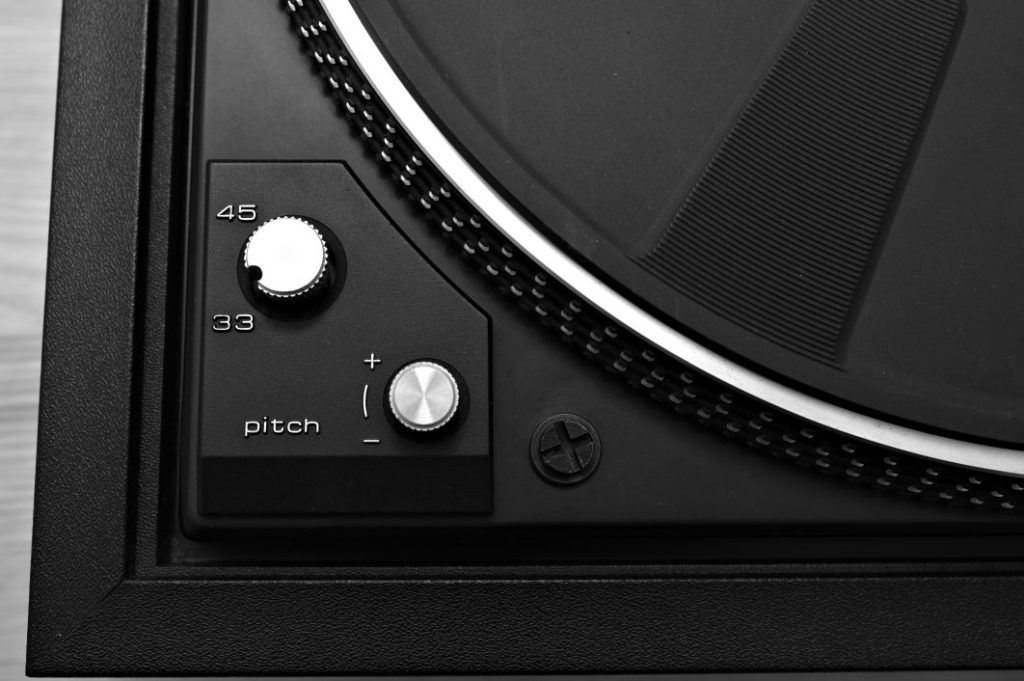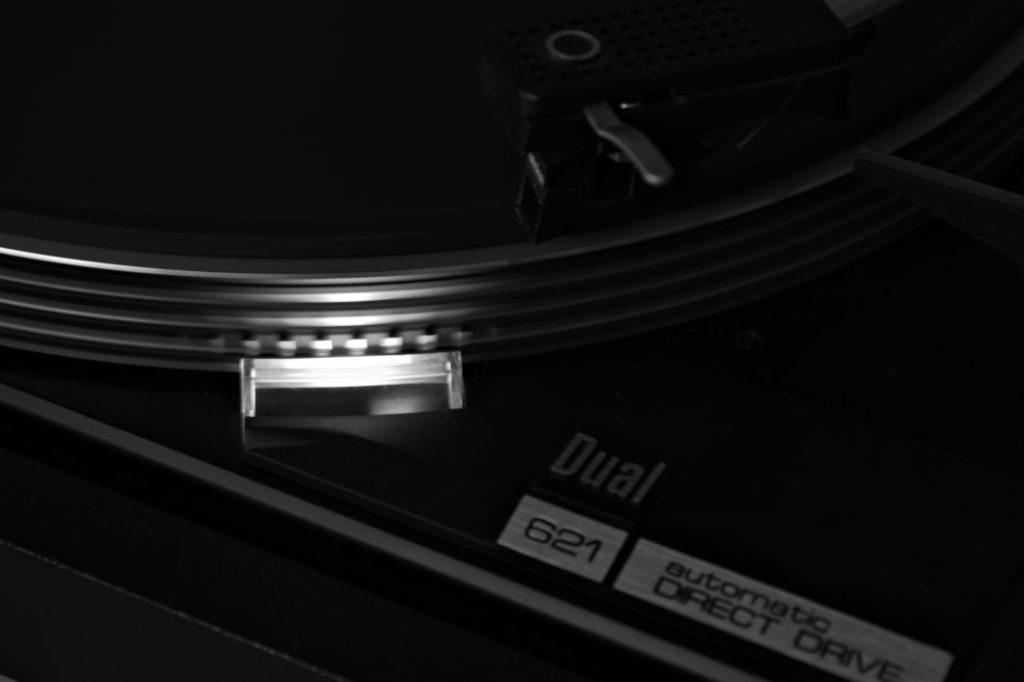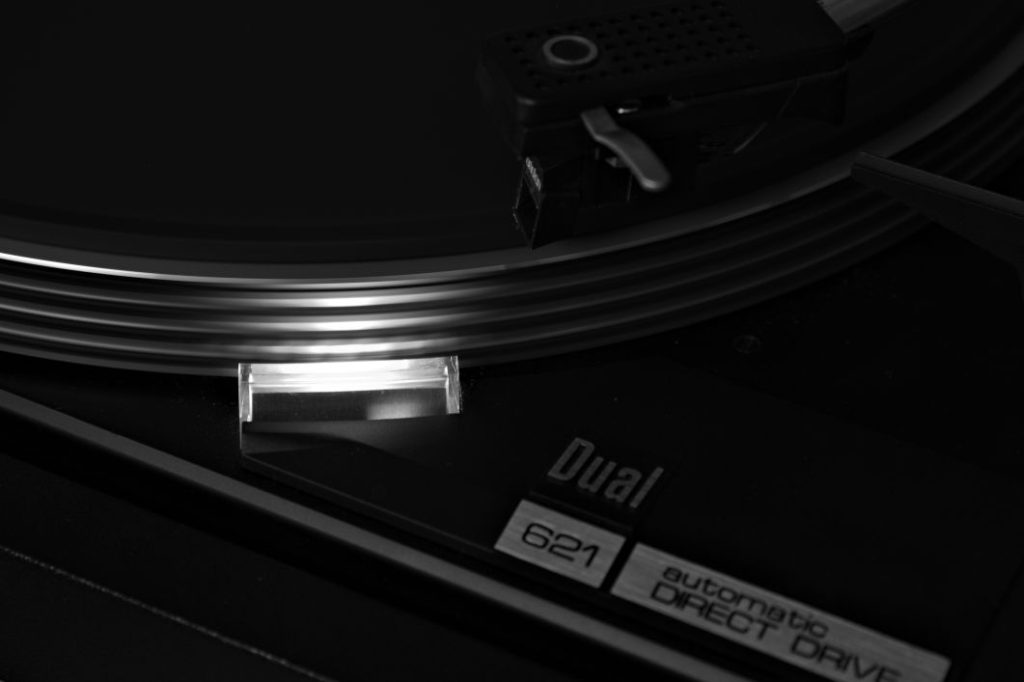You’ve probably played a lot of records on your turntable. You may have occasionally wondered what this pitch control is actually for and what’s so great about it. In this article, we’ll look at this often overlooked feature called turntable pitch control and learn why we shouldn’t underestimate it. In keeping with tradition, we are also dispelling some of the myths surrounding this inconspicuous tool.

About the importance of pitch control in vinyl playback
Pitch control is a seemingly trivial feature of turntables that allows you to adjust the rotation speed of the platter. From the article on record wobbling we already know that the speed at which a record spins directly affects its pitch. If the speed is too slow, the pitch will be too low. If the speed is too high, the pitch will be too high. The ability to adjust the rotation speed allows you to ensure that your records play at the correct speed. This in turn means you can listen to the music as the artist intended.
One of the main reasons pitch control is important is that turntables are prone to rotational speed variations. In simpler models without speed control, the speed depends heavily on bearing friction and therefore on aging and temperature. But the higher quality versions with speed control can also be dependent on the temperature. Since the early circuits were often analog in design, they do not have a stable time standard like a quartz. As you might guess, only these quartz-controlled speed controls are so precise that they can be treated as set-and-forget-types.
Adjustment of turntable pitch control
In order to prevent our records from constantly sounding too fast or slow, it is advisable to keep an eye on the pitch setting. At this point I would like to mention in fairness that the deviation is normally rather small and would probably only be noticeable in a direct comparison. Nevertheless, it doesn’t hurt to check things every now and then. Setting and checking the correct pitch depends largely on the features of the turntable. Speaking of features: As already mentioned above, adjustment is usually not necessary with a quartz drive. For anyone else who isn’t so lucky to own one, it’s best to go through the options one at a time.Let’s start with the simplest case (apart from the quartz drive, obviously).


With built in strobe
Normally, if there is a strobe, pitch control should also be available. With this combination, a stroboscope illuminates the dots on the edge of the platter. Due to the stroboscopic effect, these points appear to be static at the correct speed. If they appear to be moving, the turntable is either running too fast or too slow. We can now use the pitch control to finely adjust the speed so that the dots are steady and the speed is precise.
For all hardliner readers: The frequency of the stroboscope is often linked to the mains frequency. The latter in turn is not necessarily 100% stable, but may deviate within certain limits. A deviation of +/- 0.5Hz is often specified, which means an error of less than 1% based on 60Hz. At 50Hz the error is still exactly 1%, which is certainly not bad for a completely analog medium.
Without built in strobe
Without a stroboscope, things become a little more complicated. In order to adjust this exactly, I recommend a proper test record with defined frequency signals. After installing a (free) tuner app on your phone, you can use it to set the pitch very precisely until the measured frequency matches its stated value. Compared to the stroboscope at mains frequency, this gives you even greater accuracy, as your phone can probably measure frequencies more accurately than 1%. The setting itself may be a bit hidden here. You can probably read in the documentation for your record player where a small potentiometer or adjustment screw may be located.
Here, too, a word of honesty: It is probably naive to expect that the drive will always maintain this set speed 100% exactly. For an enthusiast, however, it is an easy exercise to gather experience over time and, if necessary, to let the turntable warm up to its steady state prior to a listening session.
Without an adjustment option
There are certainly readers who ask themselves how they can adjust the speed without a turntable pitch control option. Well, what can I say without offending anyone? Bluntly put: In this case, you have to live with whatever speed the turntable provides you. In any case, I don’t know of any amateur tricks, but I’m of course open to feedback.
Common myths about turntable pitch control
Faster playback damages the record
This myth is often trivialized. In fact, we should imagine what happens when the record is played. As described in the article about how records work, the stylus slides through the groove and tracks the mechanical vibrations. This creates friction and therefore wear and tear on the stylus and record. Playback at increased speed means nothing other than that the frequency of the mechanical vibrations is artificially increased. The stylus now slides faster through the groove and has to sample the signals at a higher frequency.
From a technical point of view, the stylus experiences higher accelerations, higher forces are created and, as bitter as that may be, higher wear and tear. Of course, it’s not the case that you have to throw away the record and stylus after playing it once at a moderately increased speed. In any case, I can’t enjoy the funny sound of LPs at 45 rpm without feeling guilty. So this myth is at least partially true.
You can listen to music at a different tempo
We have already noticed it repeatedly: the pitch also changes with the tempo. The two are firmly linked and cannot be changed independently of each other. It is of course true that you can change the rhythm of the recordings when playing them back. However, the associated change in pitch becomes noticeably alienating at a certain level. When I read that you can experience your record collection in a completely new way, I inevitably think of pot and mushrooms. I therefore consider this myth to be partially false.
DJs use turntable pitch control for smooth transitions
When transitioning between two songs whose rhythms are slightly different, you can actually use pitch control (if you can) to match both tempos. The transition is then smoother and doesn’t throw anyone out of rhythm while dancing. The slight change in pitch is not significant here, after all there is rarely a nerd with a tuner on the dance floor. And we’re not talking about slightly increased wear on records for scratching DJs anyway. I accept this myth without reservation.
Turntable pitch control: Final thoughts
We have (at least I hope so) learned a lot in this article about the possibilities and limitations of pitch adjustment on turntables. In addition to its use in DJing, the fine adjustment in the Hi-Fi area is particularly interesting. Finally, I would like to emphasize once again that small deviations in pitch only become really annoying when they lead to a dynamic wobble. As long as they are static, they remain much less noticeable. Regardless, I hope you enjoy listening to your records at a speed that gives you the most enjoyment.